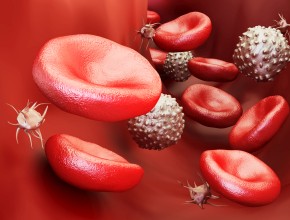Full article
A PDF of the full version of the article, published in Polish Archives of Internal Medicine, can be accessed free of charge here.
Abstract
Restless legs syndrome (RLS) and nocturnal leg cramps (NLCs) are common disorders affecting 7.0% and 24.1% of the population in some European countries, respectively. Patients suffering from RLS experience uncomfortable nocturnal sensations in the legs with the urge to move that dissipates while moving. NLC is characterized by abrupt muscle contraction, most often in the gastrocnemius or foot muscles, which occurs at night and may result in significant sleep disturbances.
The diagnosis of these disorders has presented a challenge to health-care providers because of symptom overlap with other sensory and motor disturbances with nocturnal predominance. Treatment options and approaches are lacking, partially because of our currently incomplete understanding of the pathophysiological mechanisms underlying these conditions.
We reviewed the medical literature to provide a comprehensive assessment of RLS and NLC with a focus on improved diagnostic accuracy and treatment approaches.
 English
English
 Español
Español
 українська
українська






